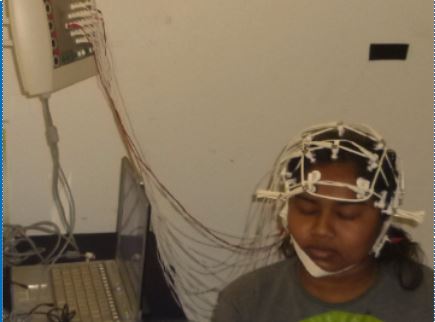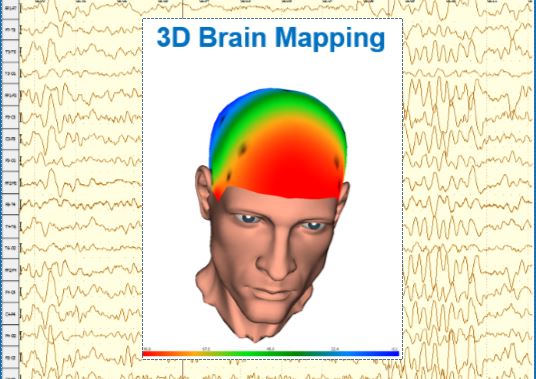
Specialist Neurologist
Electroencephalography (EEG)

CV | Symptoms | Diseases | NCS/EMG | Research | Contact | Home
 |
Dr Diana Andreeva Specialist Neurologist Electroencephalography (EEG) |
 |
1. What is an EEG?
EEG stands for Electroencephalography. This is a recording of your brain waves
(the electrical activity of your brain). During an
EEG test, electrodes pick up the brainís electrical impulses and carry them to
the computer where their pattern is recorded as waves. The EEG gives
information about the brain that is useful to your doctor in making a diagnosis
in several different conditions. It is the only test that can produce this sort
of information.
2.
Why have an EEG test?
EEG can provide your doctor with valuable clues
to diagnose or monitor the following health conditions:
∑
brain diseases
such as
Alzheimer's
disease
∑
brain tumors
(abnormal
structures in the brain)
∑
migraines
∑
epileptic
seizures
(distinguish
them from other types of fits such as
psychogenic
non-epileptic seizures,
syncope)
∑
coma
(find out if a patient who is in a coma is brain-dead).
∑
haemorrhage
(abnormal
bleeding)
∑
encephalitis
(swelling of
the brain)
∑
amnesia
(memory
problem)
∑
head injury
∑
cerebral infarction
(tissue
death due to a blockage in blood flow)
3. What should I do before the EEG test?
Wash your hair the night before the test; do not use any hair products on after rinsing like hair spray, gel or hair lotion/cream. If you have a hair weave, you may want to ask for special instructions.
Take all your usual medication as normal. Bring a list of your medications with you.
Eat as normal. Avoid all drinks containing caffeine for 8 hours before the test.
You should have a normal nightís sleep before the test.
4.
What happens during EEG test?
∑
Before performing the EEG you will be explained each aspect of the test and
answered any questions you may have.
∑
You will sit
comfortably
on a chair during the EEG.
∑
Plastic helmet and electrodes will be placed on your scalp and the electrical
activity of your brain will be recorded.
∑
During the test you may be asked to have your
eyes closed or open, to be exposed at a
bright flashing light (photic stimulation)
and/or to breathe deeply for at least 3 minutes (hyperventilation).
∑
You must keep your head still, sit as still
and relaxed as possible so that the EEG recording will be clear.
∑
The test will take 30-40 minutes.


5.
What happens after the EEG test?
When the investigation is finished, the helmet and the electrodes are removed without any pain.
You will then be able to go home or back to work and continue with your normal activity.
There are no after-effects from EEG test.
6.
How will the results of this test assist my
consultant?
∑
An EEG will help your consultant in the diagnosis and management of
your complaints or condition.
∑
You have to discuss the report/findings with your consultant.
7.
What are the consequences of not having an EEG?
∑
An EEG is well established method of helping doctors to diagnose
and treat a range of medical conditions.
∑
Your doctor would not have as complete a picture as they require
and hence your diagnosis may take longer and/or your treatment may not be the
most appropriate.
8.
Are there any alternative ways of getting the same
information that an EEG provides?
∑
No. However, there are many areas of research taking place and the
development of scanning techniques for example may mean that in the future
different methods may be available.
9.
Frequently asked questions
Is the test painful?
No. Slight discomfort may be felt from pressure of electrodes.
Will electrical shocks be applied?
No. We are only recording
electrical activity that your brain produces naturally.
Are needles involved?
No
Can you read my mind?
No. This is not a psychological test. We are only recording electrical impulses
and not thoughts.
Can I wear jewellery?
Yes. This has no effect. Occasionally earrings may have to be removed.
Does the EEG do anything to the brain?
No. The machine only
records signals from the brain; nothing is done to the brain.
May I eat and/or take my medicines beforehand?
Eating is fine. You may
also continue your usual medicines. We will, however, be asking what medicines
you do take.
Will I be able to drive alone after the test?
Yes.
Dr. Diana Andreeva EEG
CV | Symptoms | Diseases | NCS/EMG | Research | Contact | Home
Revised: 06 September 2025